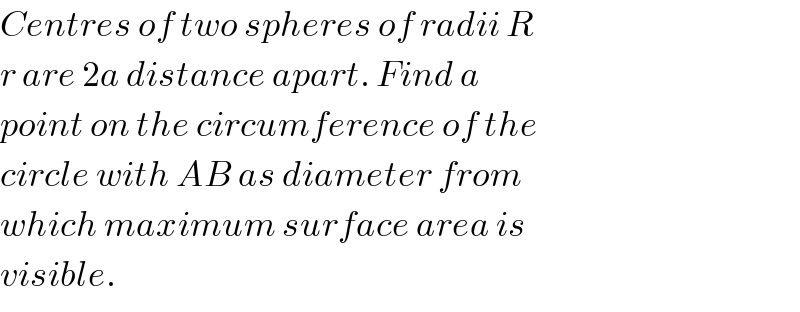
Question and Answers Forum
Question Number 54137 by ajfour last updated on 29/Jan/19

Commented by ajfour last updated on 29/Jan/19

Commented by ajfour last updated on 29/Jan/19

Answered by ajfour last updated on 29/Jan/19

Commented by mr W last updated on 29/Jan/19

Commented by mr W last updated on 29/Jan/19

Commented by ajfour last updated on 30/Jan/19

